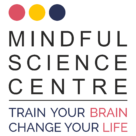The amygdala – the jumpy superhero
The amygdala is like the brain’s super hero, protecting us from threats. It helps us to react quickly when there is danger. Sometimes it’s good to react—when there’s a real physical threat, like when you see a football coming your way. The amygdala simply decides that there’s not enough time to think about it and makes us react quickly: you move your head away from the path of the football. In this way, the amygdala can decide whether we get to think about the information our body gathers through our senses or not.
But there’s a problem. The amygdala can’t see a difference between real danger and something stressful. You could say it’s jumpy and that it makes mistakes.
When we’re angry, sad, or stressed the amygdala thinks there’s real imminent danger. We then simply react without thinking. We might say or do something we regret immediately. We might even start a fight or just freeze when we’re offended, or supposed to take test, or speak in front of the class. Fear and stress shuts down our thinking in this way.
The prefrontal cortex – the smart one
The part of our brain that helps us make good choices is called the prefrontal cortex, or PFC. You could call it the smart one, as it helps you make smart choices and decides what is stored in your memory.
To make good choices, the PFC needs to get the information our body gathers through the senses—sights, sounds, smells, and movements. The questions is: will the amygdala allow the PFC to analyse the information early enough?
Remember: the amygdala, the jumpy superhero, often times hinders the information from going to the prefrontal cortex and we make rash choices. This can happen when we’re angry, sad, negative, stressed, or anxious.
What we want to do is to help the jumpy superhero calm down. But how?
Here’s the trick.
When we’re calm, the amygdala is calm and sensory information flows to the prefrontal cortex and we can make better choices. Even our memory improves when we’re calm and happy. We’re able to remember better and make new, lasting memories.
So, how do we calm down so that the PFC, the smart one, has time to get and analyze all the information for us so that we make better choices?
Mindfulness practice to the rescue
Mindfulness helps us to calm down, and this, in turn, calms the amygdala so that it allows the information flow to the prefrontal cortex—that part of our brains that helps us make good choices. When we’re calm, we can more easily be mindful and make good choices.
Scientists have figured out that the prefrontal cortex is more activated following mindfulness training and our high-level functions like the intention to pay attention, emotional regulation, body regulation, our communication skills, empathy, and our ability to calm and self-soothe are more available to us.
Pretty cool, right?
The more we practice mindfulness the more we’ll experience calm moments, even if we weren’t trying to be mindful.
How to do it?
When you feel overwhelmed, stop for a moment, take a few deep breaths and exhale slowly. Name the emotion you are experiencing.
Focus on your breath for five breaths. See where you can feel your breath most easily—your stomach, your chest, or your nose.
Control your breathing for a short while. Do deep belly breathing for five breaths. Put your hands on your belly and feel how it expands as you breathe in.
Multiple short mindful moments per day trains your brain to become more mindful even when you don’t try to be mindful. In other words, the more you train, the easier it will be to be mindful and self-soothe when you’re actually in a stressful situation.


